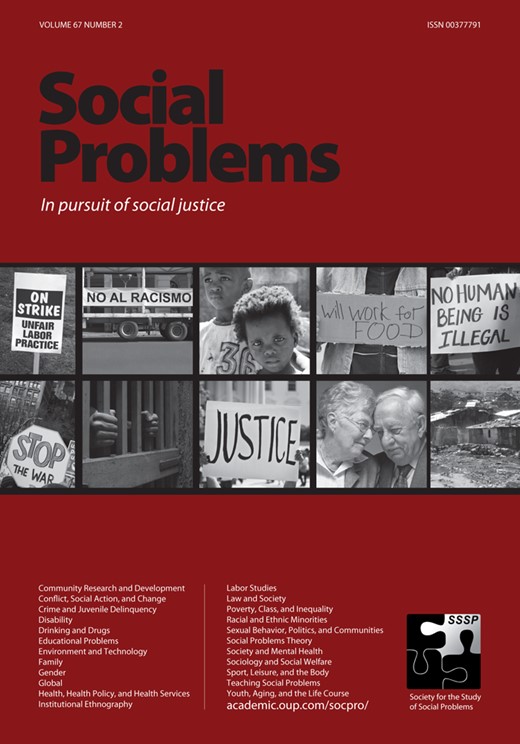-
Views
-
Cite
Cite
Forrest Stuart, Code of the Tweet: Urban Gang Violence in the Social Media Age, Social Problems, Volume 67, Issue 2, May 2020, Pages 191–207, https://doi.org/10.1093/socpro/spz010
Close - Share Icon Share
Abstract
Academics, criminal justice professionals, and news outlets have warned that gang-associated youth use social media to taunt rivals and trade insults in ways that cause offline retaliation. But there is surprisingly little empirical research investigating how gang-associated youth deploy social media in gang conflicts. Criminal justice professionals routinely overstate the violent effects of social media challenges, which further exacerbates criminalization, racial stereotyping, and social inequality. Drawing from two years of ethnographic fieldwork on Chicago’s South Side, this study asks how gang-associated black youth use social media to challenge rivals. Bridging traditional theories of urban violence with emerging media scholarship, I argue that social media disrupt the key impression management practices associated with the “code of the street.” Specifically, gang-associated youth exploit social media to publicly invalidate the authenticity of their rivals’ performances of toughness, strength, and street masculinity. Challengers do so through “cross referencing,” “calling bluffs,” and “catching lacking.” Each strategy differs in its likelihood to catalyze physical retaliation, which is a function of the amount and depth of counter-evidence necessary to refute a given challenge. These findings carry important implications for addressing urban violence, gangs, and inequality in the social media age.





